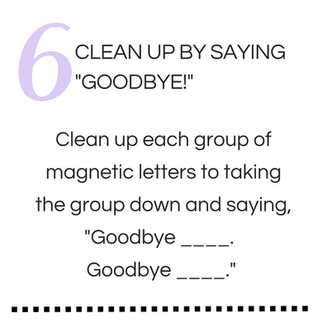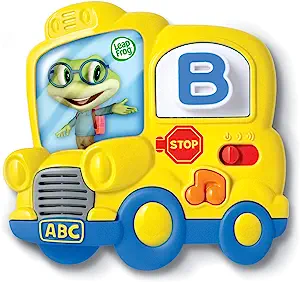Learning the Alphabet: What to Do When Children Struggle with Letter Names and Sounds
- Melissa McCall
- Jul 23, 2023
- 5 min read
Updated: Apr 12

Learning the alphabet is an essential milestone in a child's journey towards reading and writing. However, some children may struggle with simultaneously learning letter names and sounds. If your child is facing difficulties, don't fret! In this blog post, we'll explore a helpful intervention: focusing on lowercase letter sounds. We'll discuss why lowercase letter sounds are crucial, the importance of phonemic awareness, and scientific insights into why some children struggle with letter names and sounds simultaneously.
Why is Learning Letter Sounds Crucial?
The science of reading has proven that children must make connections between the speech and vision parts of the brain. In other words, we must have phonemic awareness (the ability to recognize and manipulate individual sounds in words) and alphabetic knowledge (understand and recognizing letters of the alphabet and their corresponding sounds. Teaching reading through the relationship of letters and sounds is known as phonics.

How Do We Teach Children to Learn the Alphabet?
Teaching alphabetic knowledge can be done using various engaging and interactive methods to make the learning process enjoyable for young children. Here are some effective strategies to teach alphabetic knowledge:
1. Letter Recognition: Introduce letters one at a time, using colorful alphabet charts, flashcards, or alphabet books. Point out each letter, name it, and encourage children to repeat after you.
2. Letter Sounds: Teach the sounds of each letter using phonics. Practice saying the sounds and demonstrate words that begin with the corresponding sound. For example, "B says /b/ as in 'ball.'" Check out my Letter Sound and Motion Flashcards and Video!

3. Multi-Sensory Activities: Incorporate hands-on activities, such as using textured letters, sandpaper letters, or forming letters with playdough, to engage children's tactile senses while learning.
4. Letter Games: Play letter recognition games like "I Spy" with letters around the room, or matching games where children match upper and lower case letters.
5. Songs and Rhymes: Use alphabet songs and rhymes to make learning fun and memorable. Singing the alphabet song together can be an enjoyable way to reinforce letter order. Touch each letter as you sing.
6. Letter Tracing and Writing: Provide opportunities for children to practice tracing and writing letters. This helps reinforce letter shapes and builds fine motor skills.
7. Letter Hunt: Encourage children to find letters in their environment, such as on food packaging or street signs. This activity reinforces letter recognition in real-life contexts.
8. Alphabet Stories: Create stories or use books where the main characters' names start with a specific letter. This can help children associate letters with familiar characters and words.
9. Letter Sorts: Ask children to sort magnetic or foam letters into groups based on their characteristics, like sorting by uppercase and lowercase or sorting letters by their sounds.
10. Repetition and Reinforcement: Consistent practice and reinforcement are essential. Provide regular opportunities for children to interact with letters and sounds throughout their daily activities.
Remember to keep the activities age-appropriate and tailored to each child's individual learning pace. I suggest teaching letters in CYCLES. Check out my post, Five Myths about Teaching Alphabetic Knowledge and reach out to learn more about my suggested letter cycles. Using a combination of fun, hands-on activities and systematic teaching methods, children can develop strong alphabetic knowledge and lay a solid foundation for successful reading and writing skills.
Why Can't My Child Learn Letter Names
AND Letter Sounds?

Research sheds light on the challenges some children face when learning letter names and sounds simultaneously. In some cases, children may struggle to learn letter names and sounds due to difficulties with memory. Memory plays a crucial role in the learning process, as it involves the retention and retrieval of information. Other factors include struggles with auditory processing, language development, or phonological awareness difficulties.
If My Child Struggles to Learn the Alphabet, What Should I Focus On?

When it comes to choosing between learning letter names and sounds, letter sounds take the cake! Even further, focusing on LOWERCASE LETTER SOUNDS will provide you be the best bang for your buck. By emphasizing lowercase letter sounds, we can still provide a strong foundation for reading, even if letter names present challenges. Here are some reasons why:
1. Everyday Use:
Lowercase letters dominate written text, making them more prevalent in the reading materials children encounter daily. By focusing on lowercase letter sounds, children gain a stronger foundation for reading and writing in real-life contexts.
2. Reading Comprehension:
Proficiency in lowercase letter sounds enables children to quickly recognize and decode words in text. When they can effortlessly identify the sounds associated with lowercase letters, their reading comprehension skills are enhanced, leading to improved overall literacy.
3. Writing Skills:
Accurate representation of sounds is vital in spelling and writing. Mastering lowercase letter sounds empowers children to accurately express their thoughts and ideas through written words. It lays the groundwork for effective communication and self-expression.
Lowercase Letter Sound Intervention

Follow these steps to provide an effective intervention that targets learning lowercase letter sounds!
Here is a short example:
Conclusion:
Focusing on lowercase letter sounds is a crucial step in supporting early literacy development. By honing phonemic awareness through lowercase letter sound recognition, children strengthen their reading and writing abilities. Remember, learning to read and write is a journey that requires understanding, support, and time. Embrace your child's individual progress, celebrate their achievements, and continue to provide opportunities for growth. Together, we can nurture a lifelong love for reading and empower children on their literacy journey.
Take the Leap with Alphabet Academy!
If you’re ready to dive deeper into research-based strategies for teaching the alphabet, we’re thrilled to introduce Alphabet Academy, a self-guided online course. This course will walk you through everything you need to know about teaching the alphabet effectively, from research to implementation, and will provide you with all the tools you need to ensure your students’ success.

Alphabetic Knowledge Products I Love
(Amazon Associate Links)
For the Little Ones:
For the Big Kids:
Continue Learning with Moving Little Minds Literacy Curriculums, where we focus on building a strong alphabetic knowledge foundation!

Learn how we teach alphabetic knowledge, phonological awareness, and pre-writing skills through instruction and play!
Have you grabbed our free resources? Head to the website for so many valuable freebies to enhance your teaching!

Looking for Engaging Ways to Warm-Up Your Students?

Practice KEY Literacy Skills with the 100 Days of Preschool Literacy Activities Pad. Easy to implement research-based activities! Perfect for circle time or transitions!
Don't miss an update from Moving Little Minds! SUBSCRIBE HERE!

We believe that every child deserves a bright future, and this begins with a strong foundation in early literacy skills. At Moving Little Minds, we are dedicated to providing research-based literacy activities in fun and engaging ways! By merging instruction with play, we ensure that children are reaching their full potential and embark on their educational journey well-prepared for the future! Let's build those KEY emergent literacy skills together.



























Comments